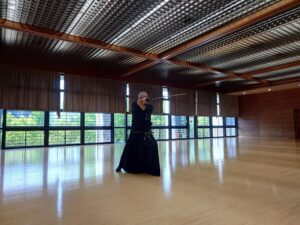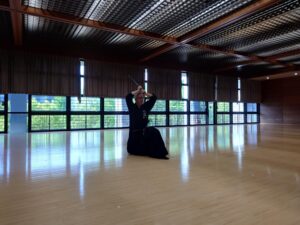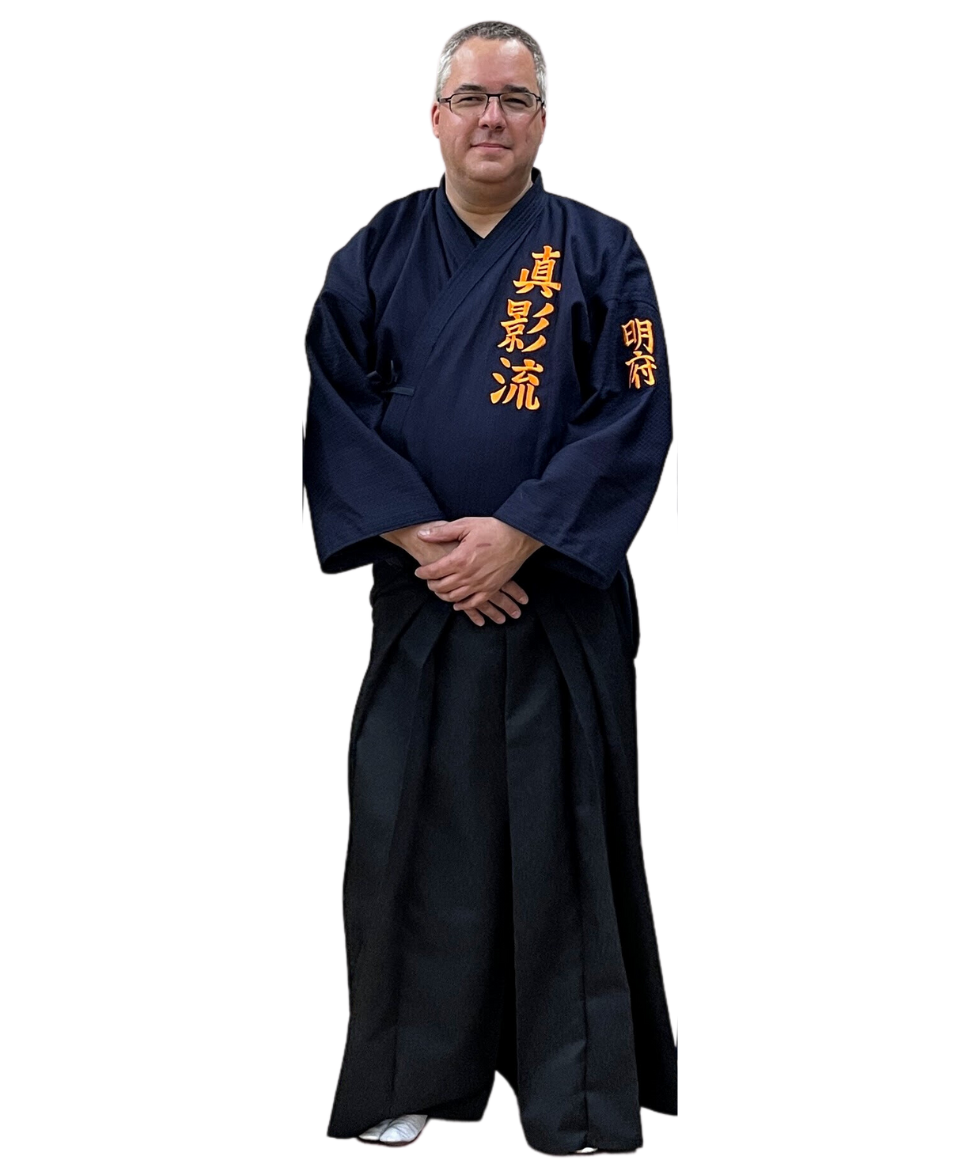BUSHIN-RYU
NIHON-DEN KOBU-DŌ BUSHIN KAI
Table of Contents
Bushin Ryu
Bushin Ryū is a traditional Japanese martial arts school founded by Mukaida Takeshi Sōke with the purpose of preserving and efficiently transmitting the martial traditions he mastered throughout his lifetime.
The school emphasizes self-perfection, healthy physical and psychological activity, and a deep study of the cultural and philosophical aspects of Japanese history. Recognizing the challenges that larger organizations face, such as internal conflicts, outdated rules, and resistance to multicultural environments, Mukaida Takeshi established Bushin Ryū to maintain the core teachings of harmony, peace, and growth without limitations based on wealth, gender, nationality, or beliefs.
The curriculum of Bushin Ryū is primarily composed of three parts that incorporate the teachings and methods of Kōryū (old schools), ensuring that these traditions are preserved and passed on to future generations under the guidance of its current headmaster.
Tojutsu (Swordmanship)
The curriculum roots of Kashima-line Shinkage Ryū Heihō and Seigo Ryū Battō-jutsu focus on traditional Japanese sword combat techniques historically practiced by top-ranking Samurai in the Ōwari domain. This martial art integrates swordsmanship methods emphasizing swift, powerful, and precise movements, combined with deep strategy, timing, distance, and psychological control influenced by Zen philosophy.
The Shinkage Ryū school, founded in the 1560s by Kamiizumi Ise-no-Kami, revolutionized sword training with innovations like the Hikihada-shinai for safe partner practice and developed enduring principles that influenced many Japanese martial arts.
The tradition has been preserved through notable lineages, including the Yagyū family, with modern schools such as Bushin Ryū expanding on these teachings. Key philosophical concepts include balanced attack and defense (Kentaihyori), appropriate response to opponents (Katsuninken), and a central cutting technique (Jūmonjigachi).
- Historical Origin: Founded circa 1560s by Kamiizumi Ise-no-Kami; linked to the Ōwari domain Samurai elite.
- Training Methods: Use of real and imitation swords, solo and paired practice with Hikihada-shinai; focus on precision, timing, distance, and psychological tactics.
- Philosophical Foundation: Strong Zen influence; concepts like “win must necessarily win” and natural laws guiding swordsmanship and life.
- Innovations: Development of Hikihada-shinai for safe partner training; refined sword techniques suited for combat in everyday clothing rather than heavy armor.
- Lineage & Legacy: Preserved through Yagyū family and other masters; modern branches like Bushin Ryū continue and expand tradition.
Taijutsu (Body Methods)
Shintō Tenshin Ryū (also known as Tenshin Kōryū Kenpō post-WW2) is a traditional Japanese martial arts school (Kōryū) focusing on unarmed and armed close-quarters combat. It includes techniques such as Tai-jutsu, Jū-jutsu, Torite-jutsu, Koppō-jutsu, Kenpō, Bō-jutsu, and Kakushibuki-jutsu. Founded in the Keichō era (1596-1615) by Ueno Tatsuzaemon Takaiyuki, the school emphasizes detailed body mechanics for controlling opponents regardless of size or strength. Over centuries, it evolved through influences from various martial traditions and headmasters, notably incorporating Ryūkyū Karate and other systems under the 8th Headmaster Ueno Takashi, who modernized and renamed the school post-WW2.
This school balances tradition with practical combat application and has a rich lineage of masters dedicated to its preservation and evolution.
- Origins & Founder: Established in the Keichō era by Ueno Tatsuzaemon Takaiyuki, a samurai from the Iga region.
- Curriculum: Comprehensive study of body mechanics through Tai-jutsu, Jū-jutsu, Torite-jutsu, Koppō-jutsu, Kenpō, Bō-jutsu, and Kakushibuki-jutsu.
- Development: Influenced by multiple martial arts schools including Ichijō Fuji Koppō Torite-jutsu, Takagi-ryū Bō-jutsu, Ryūkyū Karate, and others.
- Modernization: The 8th Headmaster Ueno Takashi (1931-1976) incorporated various arts to modernize the school and renamed it Tenshin Kōryū Kenpō to avoid post-war controversy.
- Notable Legacy: Ueno Takashi was a significant figure in preserving traditional Japanese martial arts and was a founding member of Nihon Bu-jutsu Kenkyūjō.
Buki-jutsu (Weapon Methods)
The curriculum originates from the Hōten Ryū school, established in the late Sengoku period, focusing on battlefield combat and ascetic practices for Ashigaru and Samurai. It includes a wide array of weapons beyond swords and spears, categorized into sharp, stick-like, and flexible weapons.
The training integrates Shintō and Shugendō philosophies, emphasizing natural laws and outdoor practice for realistic combat readiness. Techniques appear simple but are designed for rapid troop training using improvised weapons, often made from everyday materials. Advanced practitioners create their own weapon variations and techniques.
- Hōten Ryū founded during the Sengoku Jidai (1467-1600) for battlefield combat.
- Weapons include swords, spears, staffs (Bō, Jō), chains, ropes, fans, sickles, throwing blades, and other hidden weapons (Hi-buki).
- Weapons categorized as sharp, stick-like, and flexible types.
- Training emphasizes connection to nature and realistic combat terrain, rooted in Shintō and Shugendō beliefs.
- Techniques are straightforward for quick training of troops using improvised materials.
- Practitioners manufacture their own weapons and develop unique techniques.





